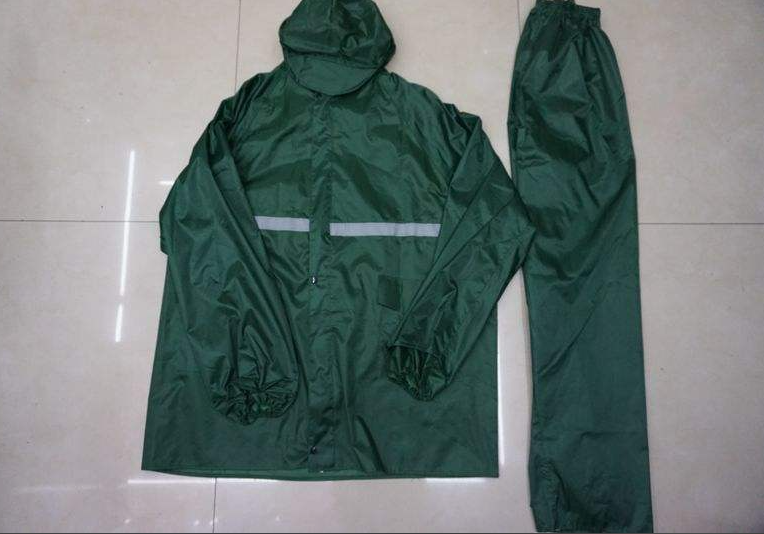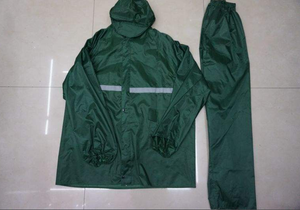
Detailed Explanation of Raincoat Inspection Methods and Standards - Inspection Services for Warehousing and Factory Audits
Raincoats, as an essential piece of equipment for outdoor protection, their quality directly affects the comfort and safety of the users. The quality inspection of raincoats is a systematic process that involves quality control throughout the entire process from the entry of the fabric to the delivery of the finished product. This article will deeply analyze the factory inspection and inspection process of raincoats, the key points of quality control, and the testing standards, providing a comprehensive reference guide for purchasers, quality inspectors, and manufacturers.
I. Basic Knowledge of Raincoats and Pre-Inspection Preparation
(1) Types and Characteristics of Raincoat Fabrics
The waterproof fabrics used in raincoats mainly include rubber fabric, oilcloth, plastic film, and modern breathable fabrics such as specially treated nylon and Gore-Tex. Different fabrics have significant differences in terms of waterproofness, breathability, and durability. During the inspection process, specific tests need to be conducted based on the product specifications.
(2) Preparations before Inspection
Technical document review: Verify product specifications, fabric test reports, and waterproof coating certification certificates
Verification standard confirmation: Clearly define the applicable national standards (GB/T series standards) and the customer's specific requirements
Calibration of testing equipment: Ensure that the waterproof tester, tensile testing machine, color fastness tester, etc. are within the calibration validity period.
Sampling plan determination: Based on the batch size, the sampling quantity and acceptance criteria are determined in accordance with GB/T 2828.1
II. Key Points for Raincoat Factory Audit
(1) Quality Management System Audit
Check whether the factory has established a complete quality management system (ISO9001 certification)
Review the supplier management procedures, particularly the evaluation records of key raw material suppliers such as fabrics, waterproof coatings, and fasteners.
Review the production process control documents and their implementation status, with a particular focus on key procedures such as cutting, sewing, and sealing.
Evaluate the effectiveness of the control procedures for non-conforming products and the corrective and preventive measures.
(2) Key points of on-site production inspection
Fabric storage management: Check the storage environment of fabrics to prevent moisture and direct sunlight exposure.
Cutting Workshop: Check fabric utilization rate, cutting accuracy, and color difference control
Seam-making workshop: Assessing equipment condition, needle spacing control, and thread quality
Sealing tape process: Check the quality of tape adhesion, temperature control, and pressure parameters.
Finished Product Inspection Area: Verify the implementation of inspection standards and record the completeness.
III. Inspection Standards and Methods for Raincoats
(1) Fabric Quality Inspection
Material Identification:
Distinguishing between raw materials and recycled materials: Recycled materials have an unpleasant smell and poor adhesion.
Fabric thickness measurement: Meets specification requirements
Color difference test: The colors of the products in the same batch are uniform and consistent.
Physical performance test:
Tensile strength test: Meets the requirements of the fabric standards.
Tear strength test: Ensure durability
Wear resistance test: Simulating usage conditions of wear
(2) Process Quality Inspection
Cutting Quality:
Cutting piece accuracy: The shape remains unchanged and the curvature is accurate. Tolerance is ±2mm.
Fabric matching: The color combination is appropriate, and the sizes of the two-layered suit are consistent both inside and outside.
Sewing quality:
Pitch density: No less than 12 stitches per 4 cm, evenly distributed and consistent.
Thread quality: No skipping stitches or floating threads. The needle entry and exit points have 5 reverse stitches.
Component sewing: The parts such as the hat, brim, and hood meet the process requirements.
Seal quality:
Adhesion accuracy: The deviation of the center line of the rubber strip should not exceed 3mm.
Bonding strength: The bonding strength between the rubber strip and the main rubber of the raincoat is greater than 2000 water pressure columns.
Appearance quality: No burned holes, no leakage sections and no bubbles.
(III) Functional Testing
Waterproof performance test:
Static water pressure test: No leakage when reaching the specified water pressure value.
Rain test: Evaluates the waterproofing performance under heavy rain conditions
Seam sealing test: Focus on testing the waterproof property at the seam area.
Air permeability test:
Humidity conduction test: Evaluating the ability to discharge humid hot air
Water permeability test: Quantitative assessment of air permeability performance
Durability test:
Repeated folding test: Simulation of folding wear during use
Fastener durability test: Repeated usage test of fasteners such as four-cornered clasps
Environmental adaptability test: Performance stability under high and low temperature conditions
IV. Common Quality Issues of Raincoats and Key Inspection Points
(1) Common Non-conformities
Fatal defects: Leakage in key areas, excessive harmful substances
Serious defects: Leakage at secondary parts, stitching cracks, excessive size deviation
Minor defects: Unrepaired wire ends, minor stains, packaging issues
(2) Control of High-Risk Aspects
Fabric quality control: Thoroughly test the waterproofing, color difference, and defects of the fabric
Cutting process control: Preventing the deformation of cut pieces and the mixed use of different colors.
Seam sewing process control: Ensure uniform needle spacing and no skipped stitches or floating threads.
Sealing process control: Control the temperature and pressure to prevent leakage and burning.
Final product inspection: Comprehensive examination of waterproofing performance, process quality, and packaging labels.
V. Raincoat Inspection Rules and Sampling Plan
(1) Defect Classification Criteria
Critical Defects: Issues that affect the safety of use
Major Defect: Issues that affect the performance of the product's usage.
Minor Defects: Issues that do not affect the main functionality but do impact the appearance of the product.
(2) Sampling Inspection Plan
Incoming Material Inspection (IQC): For raw materials such as fabrics and accessories
Process Inspection (IPQC): Focuses on monitoring key processes such as cutting, sewing, and sealing.
Outgoing Quality Control (OQC): Conduct sampling inspections in accordance with the AQL standards.
(3) Special Testing Sampling
Based on the product's application and customer requirements, sampling tests are conducted on items such as waterproof performance and breathability.
VI. Packaging, Storage and Transportation Requirements
(1) Packaging Inspection Points
Folded standard: Cap brim laid flat, raincoat folded flat, iron clips placed inside
Bagging requirements: Ensure all four corners are properly placed, maintain a neat and attractive appearance, and match the color of the product number.
Outer packaging: 5 items are bundled together in one bag, tightly secured, with multiple colors combined.
Identification information: accurate and clear details such as item number, quantity, and date.
(2) Inspection of printed labels
Printing quality: Clear handwriting, accurate colors, no smudging or damage
Content accuracy: The layout was produced as required without any errors or omissions.
Position is correct: The printing position meets the design requirements.
(III) Storage and Transportation Management
Storage environment: Well-ventilated and dry, avoiding high temperature and high humidity.
Stacking requirements: Stack according to the specified number of layers to prevent deformation.
Transport protection: Measures for preventing moisture, pressure and hooking are in place.
VII. Conclusion
The quality inspection of raincoats is a comprehensive project that involves multiple aspects such as fabric performance, manufacturing techniques, and functional characteristics. The inspection personnel of the factory and the inspectors need to have a thorough understanding of product standards, inspection methods, and common quality issues in order to effectively control product quality. Manufacturing enterprises should establish a complete quality management system, especially strengthening control in aspects such as fabric quality control, sewing process assurance, and waterproof performance testing, to ensure that the products meet national standards and customer requirements.
By conducting rigorous supplier audits, controlling the production process and conducting final product inspections, the quality risks of raincoats can be effectively reduced, protecting the rights and interests of users, and simultaneously enhancing the market competitiveness of the enterprise. The raincoat inspection methods and standards provided in this article are expected to offer practical guidance for quality management in quality inspection personnel, purchasers, and production enterprises.
分享这个商品

Detailed Explanation of Raincoat Inspection Methods and Standards - In
Raincoats, as an important piece of equipment for outdoor protection, their quality directly affects the comfort and safety of the users.
